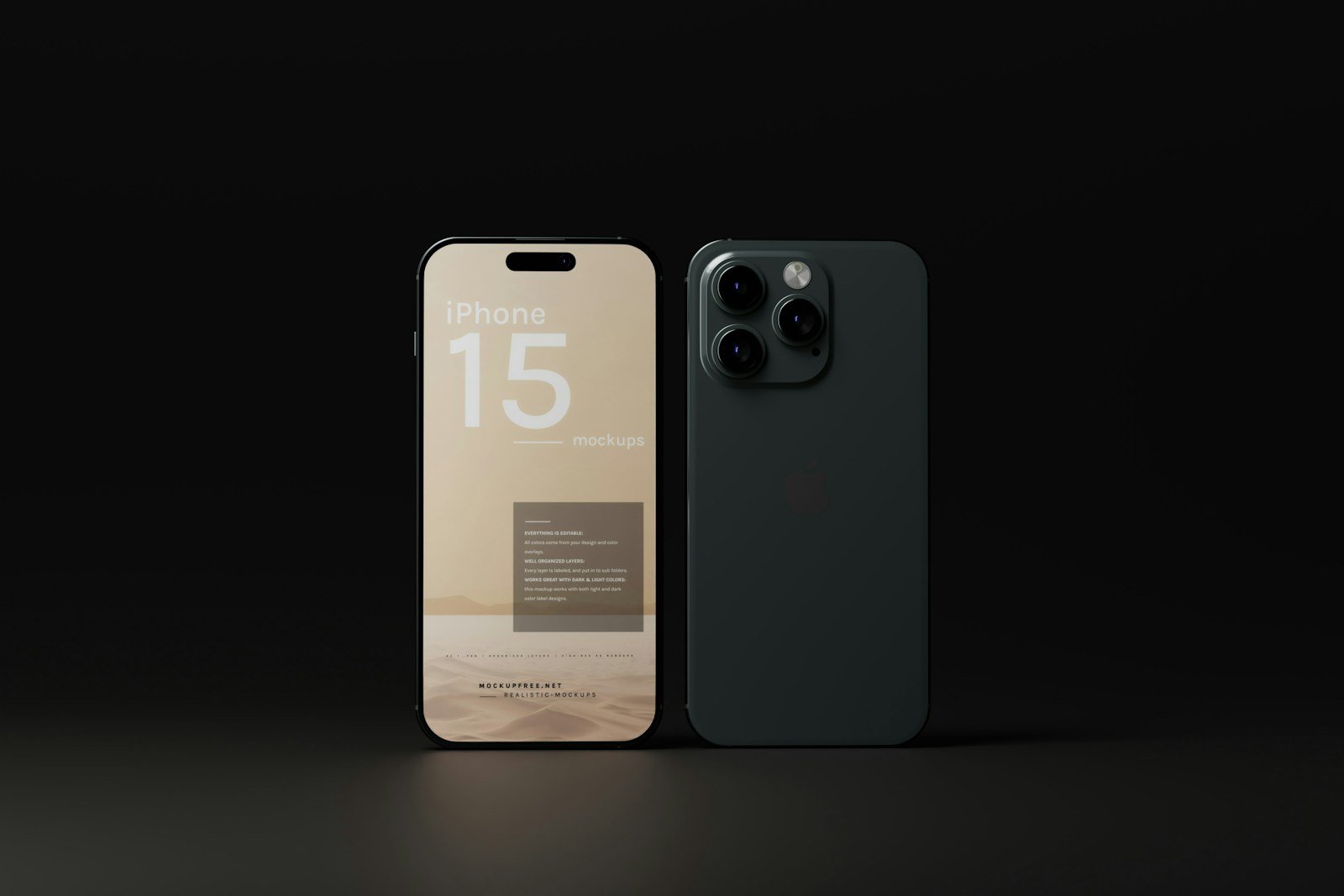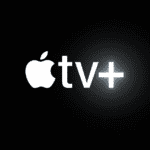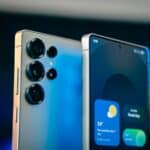The iPhone 15 series marks Apple’s big shift to USB-C connectivity, finally moving away from the Lightning port that has been standard for over a decade. This change means iPhone users can now charge their devices with the same cables used for MacBooks, iPads, and many other modern electronics. The USB-C port on iPhone 15 models offers much more than just charging capabilities – it enables faster data transfers, direct connection to external displays, and even allows your iPhone to charge other devices like AirPods or Apple Watch.
This port standardization comes after years of pressure from consumers and regulators, particularly in the European Union where legislation mandated a common charging standard. Beyond convenience, the iPhone 15’s USB-C connection supports DisplayPort technology, letting users easily connect their phones to external monitors for presentations or media viewing without additional adapters.
Overview: iPhone 15 Finally Switches to USB‑C
With the iPhone 15 lineup (15, 15 Plus, 15 Pro, and 15 Pro Max), Apple officially replaced its Lightning port with a USB‑C connector — the same standard used by most modern devices, including iPads, Macs, and Android phones.
This marks the first major port change since 2012, when Apple introduced Lightning with the iPhone 5.
⚙️ Why Apple Switched to USB‑C
The change was largely driven by European Union regulations, which require all smartphones sold in the EU to use a common charging standard by 2024.
However, Apple also highlights benefits for users:
- Universal compatibility: One cable for iPhone, iPad, Mac, and many accessories.
- Reduced e‑waste: Fewer proprietary cables.
- Faster data transfer and charging (especially on Pro models).
(Source: Stuff.tv)
⚡ USB‑C on iPhone 15: What’s New
1. Universal Charging
You can now charge your iPhone 15 using the same USB‑C cable as:
- iPads (since 2018 models)
- MacBooks
- Android phones
- Nintendo Switch
- Many wireless earbuds and accessories
✅ Bonus: You can even charge other devices from your iPhone 15, such as AirPods, Apple Watch, or another iPhone, using a USB‑C to USB‑C cable.
2. Faster Data Transfer (Pro Models Only)
- iPhone 15 and 15 Plus: USB‑C port limited to USB 2.0 speeds (480 Mbps) — same as Lightning.
- iPhone 15 Pro and Pro Max: Support USB 3.2 Gen 2 speeds (up to 10 Gbps) — 20× faster transfers when using a USB 3‑rated cable.
This makes the Pro models ideal for photographers and videographers who frequently transfer ProRAW or ProRes files.
(Source: Macworld)
3. Display and Accessory Support
The iPhone 15 USB‑C port supports:
- DisplayPort output for connecting to external displays (up to 4K at 60Hz).
- USB‑C accessories like flash drives, microphones, SD card readers, and Ethernet adapters.
- Wired CarPlay (for vehicles that support it).
✅ Tip: The iPhone 15 Pro can directly record video to an external SSD, a huge advantage for content creators.
4. Charging Speeds
Charging speeds remain similar to previous iPhones:
- Up to 20W fast charging (50% charge in ~30 minutes) with a compatible USB‑C power adapter.
- MagSafe and Qi wireless charging are still supported.
⚠️ Note: The included USB‑C cable in the box is USB 2.0, not USB 3.0 — so you’ll need a higher‑spec cable for faster data transfers.
(Source: Tom’s Guide)
🔄 What You’ll Need to Upgrade
If you’re coming from a Lightning‑based iPhone, here’s what to keep in mind:
| Accessory | Compatible with iPhone 15? | Notes |
|---|---|---|
| Old Lightning cables | ❌ No | You’ll need USB‑C cables now |
| USB‑C chargers (MacBook, iPad, Android) | ✅ Yes | Works perfectly |
| MagSafe chargers | ✅ Yes | Still compatible |
| Lightning EarPods | ❌ No | Use USB‑C EarPods or Bluetooth |
| AirPods Pro (2nd Gen, USB‑C case) | ✅ Yes | Designed for new iPhones |
✅ Tip: You can buy a Lightning‑to‑USB‑C adapter if you want to keep using older accessories temporarily.
🌍 Environmental and Practical Benefits
Apple says the switch helps reduce electronic waste (e‑waste) by allowing a single charger standard across devices.
It also simplifies travel — one cable can now charge your iPhone, iPad, MacBook, and AirPods.
(Source: Stuff.tv)
🧠 Common Questions
1. Can I use my MacBook charger to charge my iPhone 15?
Yes. Any USB‑C charger (20W or higher) from Apple or third‑party brands will work.
2. Can I charge my AirPods or Apple Watch from my iPhone 15?
Yes. Connect them via USB‑C to USB‑C or USB‑C to Apple Watch cable.
3. Does iPhone 15 support Thunderbolt?
No. It supports USB 3.2 Gen 2, not Thunderbolt 4 — though the speeds are still excellent for most users.
4. Can I connect my iPhone 15 to an external display?
Yes. Use a USB‑C to DisplayPort or USB‑C to HDMI adapter to mirror or extend your iPhone screen.
🧩 Summary Table
| Feature | iPhone 15 / 15 Plus | iPhone 15 Pro / Pro Max |
|---|---|---|
| Port Type | USB‑C (USB 2.0) | USB‑C (USB 3.2 Gen 2) |
| Data Transfer Speed | 480 Mbps | Up to 10 Gbps |
| Display Support | Yes (4K @ 60Hz) | Yes (4K @ 60Hz) |
| Reverse Charging | Yes | Yes |
| Cable in Box | USB‑C to USB‑C (USB 2.0) | USB‑C to USB‑C (USB 2.0) |
✅ Final Thoughts
The iPhone 15’s USB‑C connector is a major step toward universal connectivity — simplifying charging, boosting transfer speeds (especially on Pro models), and aligning Apple’s ecosystem with the rest of the tech world.
While it means updating your cables and accessories, the benefits — faster data, fewer cords, and more flexibility — make the upgrade worthwhile.
References:
- CNET – iPhone 15 Replaces the Lightning Port With USB‑C
- Tom’s Guide – iPhone 15 USB‑C: Don’t Make This Mistake
- Macworld – Everything the iPhone 15 USB‑C Port Can Do
- Stuff.tv – Why Are New iPhones USB‑C?
- NBC News – Apple Embraces USB‑C
Key Takeaways
- iPhone 15 models now feature USB-C instead of Lightning, allowing users to charge multiple Apple devices with a single cable type.
- The new port supports faster charging, improved data transfer speeds, and the ability to connect directly to external displays.
- USB-C enables reverse charging, letting iPhone 15 power smaller devices like AirPods, Apple Watch, or even other smartphones.
iPhone 15 Series USB-C Transition
The iPhone 15 series marks a significant change in Apple’s charging technology, moving away from the proprietary Lightning connector to the widely used USB-C standard. This transition affects how users charge their devices and connect to accessories, while also reflecting broader industry shifts toward standardization.
Design and Compatibility
The USB-C port on the iPhone 15, iPhone 15 Plus, iPhone 15 Pro, and iPhone 15 Pro Max replaces the Lightning port that Apple had used since 2012. This new connector allows users to charge their iPhones with the same cables used for MacBooks, iPads, and many Android devices.
The USB-C port enables broader compatibility with external displays through DisplayPort support. Users can now directly connect their iPhone 15 devices to monitors without special adapters.
Data transfer capabilities vary across the lineup. The standard iPhone 15 and 15 Plus transfer data at USB 2.0 speeds, while the Pro models support faster USB 3.0 transfer rates.
Fast charging is improved with the USB-C connector, particularly when paired with the right power adapter. Many users appreciate being able to use one cable for multiple devices.
Impact of European Union Legislation
The EU’s decision to mandate USB-C as the standard charging port for electronic devices by 2024 played a crucial role in Apple’s transition. This legislation aims to reduce electronic waste by standardizing chargers.
Apple initially resisted the change, arguing it would stifle innovation. However, the company ultimately complied with the upcoming requirements by implementing USB-C across the iPhone 15 lineup.
The standardization benefits consumers who can now use fewer cables across multiple devices. This change potentially reduces electronic waste as predicted by EU regulators.
The transition represents a rare instance where external regulations directly influenced Apple’s product design decisions. This shift also aligns Apple’s mobile devices with industry standards already adopted by competitors.
Charging and Connectivity Innovations with USB-C
The iPhone 15‘s shift to USB-C marks a significant evolution in Apple’s ecosystem, bringing faster charging capabilities and expanded connectivity options that weren’t possible with the previous Lightning connector.
Advancements in Fast Charging
The USB-C port on the iPhone 15 delivers improved charging speeds compared to the Lightning port found on the iPhone 14 and earlier models. Users can now charge their devices more quickly when using a compatible power adapter of at least 20 watts.
With the right charging equipment, iPhone 15 users can reach a 50% charge in approximately 30 minutes. This represents a meaningful improvement in daily usability, especially for people who need quick power boosts throughout their day.
The USB-C port also supports higher power delivery standards, allowing the iPhone 15 to handle more substantial charging inputs. This is particularly beneficial when using power banks or car chargers during travel.
USB-C vs Lightning Cable Technology
USB-C offers several technical advantages over the Lightning connection. While Lightning was limited to USB 2.0 speeds (480 Mbps), the iPhone 15’s USB-C port can potentially support USB 3 data transfer rates that are significantly faster.
The physical design of USB-C is also more robust than Lightning, with a symmetrical connector that can be inserted in either orientation. This eliminates the frustration of trying to plug in the cable correctly.
Another key difference is universal compatibility. USB-C works with MacBooks, iPads, and many non-Apple devices, reducing the need for multiple cables. Most iPhone 15 owners can now use the same cable for their phone, tablet, and laptop.
Phone cases designed for the iPhone 15 include a larger cutout to accommodate the slightly bigger USB-C port, which has a different shape than the Lightning port.
Broader Ecosystem Integration
The USB-C connector opens up new possibilities for connecting the iPhone 15 to external devices. Users can now directly connect to displays using DisplayPort over USB-C, making presentations simpler.
CarPlay connections benefit from the more reliable USB-C standard, often providing more stable connections compared to Lightning. Many newer vehicles already feature USB-C ports, eliminating the need for adapters.
The standardization to USB-C creates a more cohesive Apple ecosystem. With iPad, MacBook, and now iPhone using the same connector type, users can share chargers and accessories more freely.
While wireless charging continues to be supported on the iPhone 15, the USB-C port provides more versatility for connecting accessories like external microphones, cameras, and storage devices without special adapters.
Frequently Asked Questions
The iPhone 15 lineup marks a significant shift in Apple’s connectivity approach with the introduction of USB-C ports. These ports offer various capabilities depending on the specific iPhone 15 model.
What are the specifications of the USB-C port on the iPhone 15?
The USB-C port specifications vary across the iPhone 15 lineup. The standard iPhone 15 and iPhone 15 Plus support USB 2.0 data transfer speeds, which is about 480 Mbps.
The iPhone 15 Pro and Pro Max models offer faster USB 3.0 speeds, capable of transferring data at up to 10 Gbps. This significant speed difference allows Pro users to transfer large files much more quickly.
What type of USB-C cable will be compatible with the iPhone 15?
All iPhone 15 models come with a USB-C to USB-C cable in the box. This cable supports fast charging and is compatible with USB-C power adapters and computers.
Users can also use third-party USB-C cables that meet proper specifications. Any standard USB-C cable should work for basic charging and data transfer, though maximum charging speeds might require specific power delivery capabilities.
Has Apple made a decision on whether the iPhone 15 will feature a USB-C or Lightning port?
Yes, Apple has fully committed to USB-C for the entire iPhone 15 family. All iPhone 15 models – including the standard iPhone 15, iPhone 15 Plus, iPhone 15 Pro, and iPhone 15 Pro Max – feature USB-C ports.
This marks the end of the Lightning connector era for iPhones, which began with the iPhone 5 in 2012. The transition aligns with broader industry standards and EU regulations.
What charging capabilities are expected with the iPhone 15’s USB-C?
The iPhone 15 lineup offers improved charging capabilities through its USB-C port. The devices support faster charging speeds compared to previous Lightning-equipped models.
With compatible USB-C power adapters, users can achieve faster charging. The exact speed depends on the power adapter used, with higher-wattage adapters providing quicker charging times up to the phone’s maximum supported rate.
Will the iPhone 15 Pro have different USB-C features compared to other models?
Yes, the iPhone 15 Pro models offer enhanced USB-C capabilities compared to the standard models. The Pro and Pro Max support significantly faster data transfer speeds (USB 3.0) than the standard iPhone 15 models (USB 2.0).
This speed difference makes Pro models better suited for transferring large files like ProRes videos or high-resolution photos. The Pro models may also support additional accessories and connectivity options through the USB-C port.
What is the rationale behind Apple’s potential transition to USB-C for the iPhone 15?
Apple’s transition to USB-C for the iPhone 15 stems from several factors. European Union regulations mandated USB-C as the standard charging port for electronic devices, pushing Apple toward this change.
The move also creates better ecosystem consistency, as Apple already uses USB-C on iPads and Macs. This standardization allows users to use the same cables and chargers across their devices.
USB-C offers technical benefits like faster data transfer and more versatile connectivity options. It enables iPhone users to connect to a wider range of accessories and devices directly without adapters.






